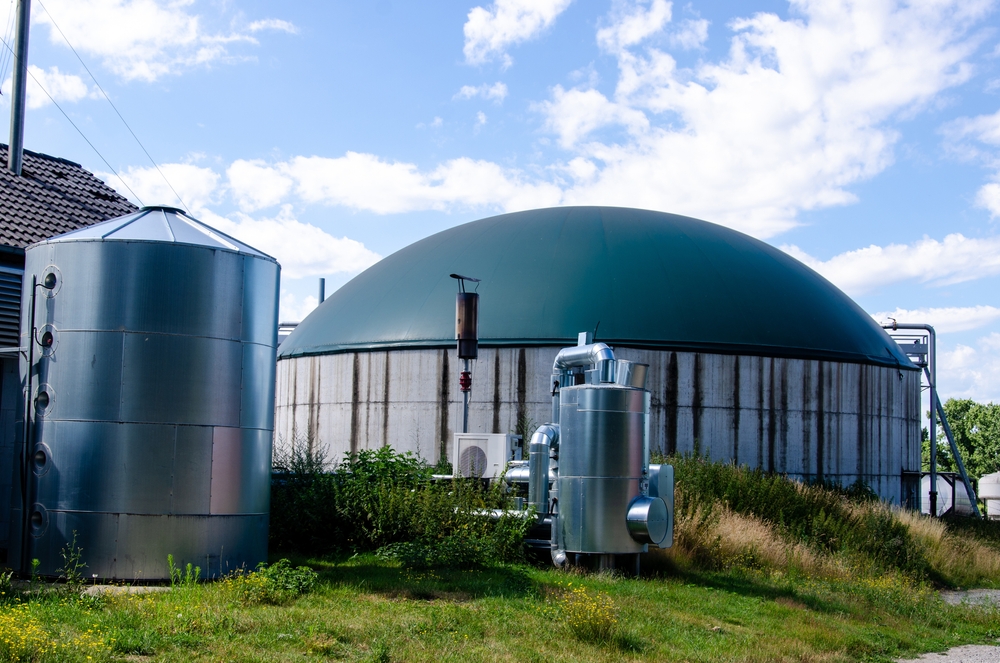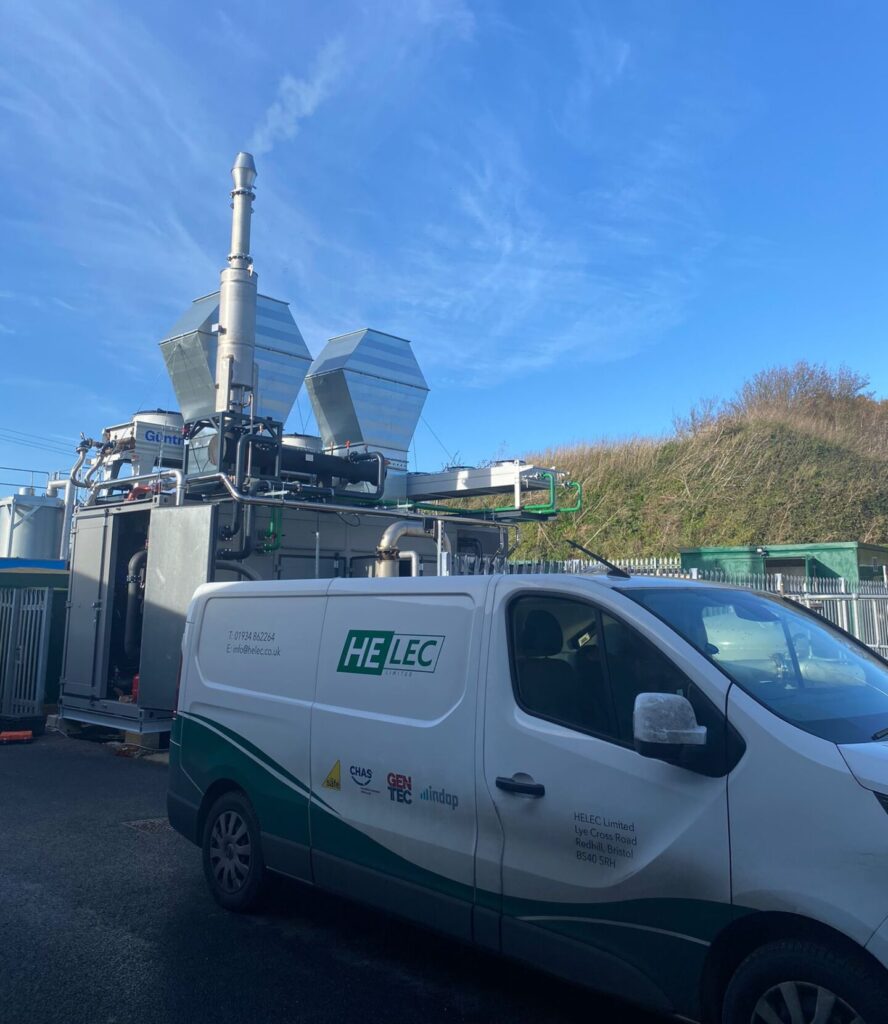Everything You Need to Know About Anaerobic Digestion
Anaerobic digestion is an entirely natural process, if harnessed correctly, it has the potential to turn waste into energy . So how does it work?
In this blog, we will share everything you need to know about anaerobic digestion.
At Helec, we proudly offer multiple services to support building projects using renewable, sustainable, and low-carbon technologies. Our 17 years of experience provide us with the expertise to professionally handle the services of design and consultation, all the way through to installation and servicing along with performance monitoring.
Is Anaerobic digestion the most environmentally friendly option?
Anaerobic digestion is a champion for eco-friendly waste management, but it’s not without competition. Let’s delve into its environmental pro’s and con’s to see how it stacks up.
On the plus side, anaerobic digestion tackles ladfill waste by transforming organic materials from landfills. into a gas In landfills, this waste decomposes anaerobically a but without capturing methane, a potent greenhouse gas. Sites that wish to utilise the gas produced from Anaerobic digestion captures this methane, transforming it into biogas, a renewable fuel source that displaces using fossil fuels.
The leftover digestate also acts as a natural fertilizer, reducing reliance on chemical fertilizers with potential environmental drawbacks.
However, anaerobic digestion isn’t entirely emission-free. Small leaks of methane can occur during the process, and burning biogas also generates some emissions. Large-scale plants require energy to operate, and depending on how the biogas is used, transporting it might add to the environmental footprint.
While anaerobic digestion offers a clear environmental benefit, it’s part of a bigger picture. Composting offers another eco-friendly option, diverting organic waste and creating nutrient-rich compost, but it doesn’t capture biogas.
Ideally, a combination of these techniques, along with a strong focus on waste reduction at the source, would create the most sustainable solution. Anaerobic digestion shines in its ability to handle large volumes of organic waste that aren’t suitable for composting, capturing methane in the process and generating renewable energy and fertilizer as by-products.
In conclusion, the most environmentally friendly option hinges on the specific type of waste and our overall waste management strategies. Anaerobic digestion is a powerful tool, but it’s most beneficial when used in conjunction with other sustainable practices.
How is waste for anaerobic digestion sourced?
Anaerobic digestion thrives on a variety of organic waste materials, acting like a versatile recycler. Here’s a breakdown of the common sources:
- Municipal Solid Waste (MSW): Organic components of household waste like food scraps, yard trimmings, and paper products can be sorted and fed into anaerobic digesters.
- Food Waste: A major source, including uneaten food from restaurants, cafeterias, and grocery stores, as well as food processing by-products.
- Animal Manure: Manure from livestock farms like cows, pigs, and poultry is a prime feedstock, rich in organic matter and often managed through anaerobic digestion on large farms.
- Sewage Sludge: The leftover solids from wastewater treatment plants can be broken down in digesters, reducing waste volume and generating biogas.
Energy Crops: In some cases, crops like corn or switchgrass are specifically grown to be used in anaerobic digestion for biogas production.
Everything you need to know about anaerobic digestion

The Breakdown
Organic Matter: Think food scraps, animal manure, or even sewage sludge. These materials are the “feedstock” for anaerobic digestion.
- Microorganisms: Tiny bugs like bacteria take centre stage. In an oxygen-free environment, these special microbes go to work, breaking down the organic matter through a series of complex reactions.
Absence of Oxygen: That’s the key! Unlike regular composting, which requires oxygen, anaerobic digestion thrives without it.
The Products
Biogas: This methane-rich gas is the star product. It can be used as a renewable energy source to generate electricity, heat homes, or even power vehicles.
Digestate: The leftover solid and liquid material after the breakdown process. This nutrient-rich digestate can be used as fertilizer, reducing reliance on chemical options.
The Benefits
Waste Management: Anaerobic digestion offers a sustainable way to manage organic waste, diverting it from landfills and reducing methane emissions from decomposition.
- Renewable Energy: The produced biogas is a clean-burning fuel, helping reduce dependence on fossil fuels.
Fertilizer Production: Digestate provides a valuable source of nutrients for plants, promoting sustainable agriculture.
Where is anaerobic digestion used?
Anaerobic digestion is used in large-scale facilities. Anaerobic digestion plants process waste from farms, municipalities, or food processing facilities. It is also made useful in Smaller Systems, home or farm-based digesters can handle smaller amounts of organic waste and provide biogas for individual use.
Overall, anaerobic digestion is a powerful tool for waste management, renewable energy generation, and sustainable agriculture. As we strive for a greener future, this natural process offers a promising solution.
What do I need to install a CHP system?
Installing a CHP (Combined Heat and Power) system requires careful planning and consideration of various factors. Here’s a breakdown of what you’ll typically need:
Feasibility Assessment
Site Suitability: Your facility needs to have the space and infrastructure to accommodate the CHP unit, fuel storage, and heat distribution system.
- Heat Demand: A CHP system is most efficient when there’s a consistent demand for both heat and electricity. Analyse your facility’s energy consumption to determine if CHP is a viable option.
Permissions and Regulations
Planning Permission: Depending on the size and location of your CHP system, you might need planning permission from your local authority.
Environmental Permits: CHP systems are regulated to ensure they meet emission standards. You might need environmental permits for air quality and waste management.
Technical Considerations
Fuel Source: Choose a fuel source that’s readily available, cost-effective, and aligns with your environmental goals. Common options include natural gas, biogas, or propane.
- System Design: A qualified engineer will design a CHP system tailored to your specific needs, considering factors like heat output, electricity generation capacity, and fuel type.
Installation: Hire experienced professionals to install the CHP system according to regulations and safety standards.
Financial Investment
CHP System Cost: The upfront cost of the CHP unit itself can be significant. However, funding support can be sourced, as can a no-cost PPA (power purchase Agreements) providing long-term energy savings which can offsetand eventually remove this cost.
- Installation Costs: Factor in the cost of installation, including labour, materials, and any necessary infrastructure upgrades.
Maintenance: Regular maintenance is crucial for optimal performance and longevity of the CHP system. Budget for ongoing maintenance costs.
Additional Considerations
Fuel Supply Contract: Secure a reliable fuel supply contract with a competitive price.
- Grid Connection: If you plan to export excess electricity back to the grid, ensure you have the necessary grid connection and authorization.
- Monitoring and Maintenance: Establish a system for monitoring the CHP system’s performance and performing regular maintenance to ensure efficiency and safety.
Although this may seem like a lot to consider, when you use Helec, you are guaranteed the expertise and guidance of experts with years of experience in sites of various sizes. This means that all of our solutions are tailored on an individual basis.
Simply put, your CHP system may not be the same as another one of our clients, however, it will be perfect for the space it is being used in.
Discover alternate power solutions today

We hope to have provided everything you need to know about anaerobic digestion. For more information on our financing options, feel free to click the link below for our contact information, so you can start your journey with us today.
The team here at Helec thanks you for taking the time to read our blog. If you have any further questions, you can contact us here. Alternatively, if you want to enquire about our expert services or for more information on our solutions, click here.
Our wide range of services enables us to provide consultation, installation, and maintenance if you require it.
Our expertise provides us the ability to offer the following energy solutions:
- Combined heat and power packages
- Complete CHP service and maintenance packages
- Thermal stores and buffer vessels
- Air & Ground source heat pumps
- Solar thermal systems
- Large district residential heating systems
And more. See how Helec can help you today.
